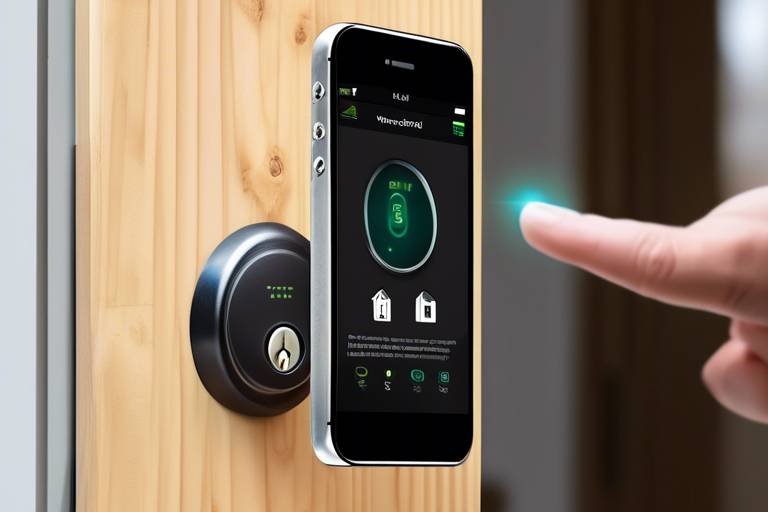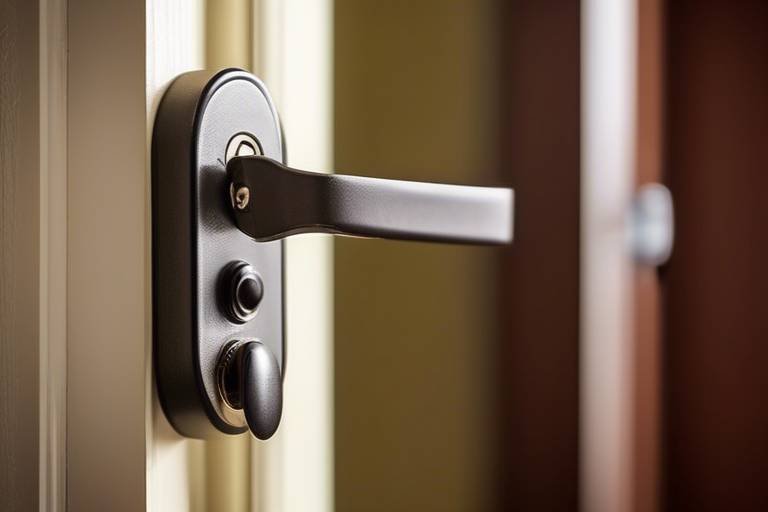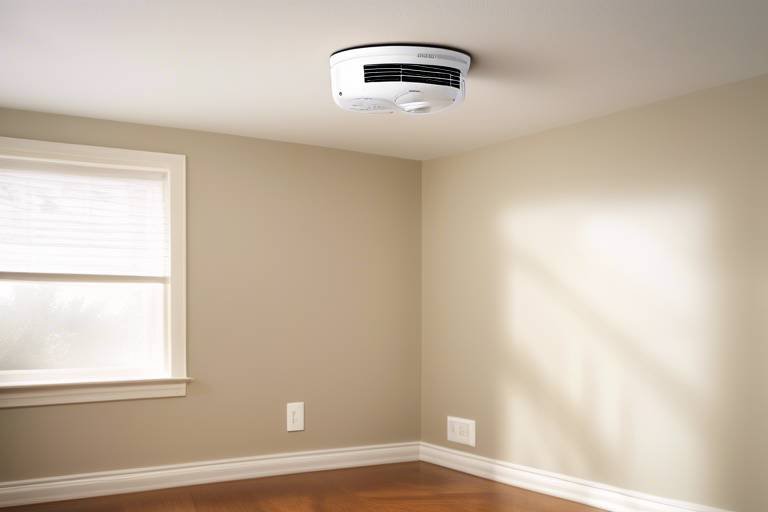Protecting Your Home Against Rodents and Pests
Keeping your home safe from rodents and pests is not just about comfort; it's about health and peace of mind. Imagine settling down for a cozy evening, only to hear the unsettling sound of scurrying in the walls or the sight of a tiny mouse darting across your kitchen floor. Yikes! These unwelcome guests can wreak havoc on your living space and pose serious health risks. In this article, we will explore effective strategies and tips for safeguarding your home, ensuring a healthy living environment for you and your family.
Before we dive into protection strategies, it’s crucial to understand the common pests that invade our homes. Rodents, such as mice and rats, are notorious for their ability to sneak in through tiny cracks and crevices. They are not just a nuisance; they can cause significant damage to your property by gnawing on wires, insulation, and even structural elements. Insects like ants, cockroaches, and termites can also find their way into your home, each bringing their own set of challenges. For instance, termites can silently munch away at your wooden structures, leading to costly repairs.
Identifying the early warning signs of rodent and pest infestations can help you take action before the problem escalates into a larger issue. Have you ever noticed tiny droppings in your pantry or strange noises at night? These could be red flags indicating that you might have a pest problem.
When it comes to rodents, there are specific signs that indicate their presence. Look out for:
- Droppings: Small, dark pellets often found in hidden areas.
- Gnaw Marks: Chewed edges on food packaging or furniture.
- Nesting Materials: Shredded paper or fabric tucked away in corners.
Being proactive in recognizing these signs can save you from a bigger headache down the road.
Understanding where rodents typically enter your home can assist in sealing off these vulnerabilities. Common entry points include:
- Gaps around doors and windows
- Cracks in the foundation
- Holes in walls or ceilings
By sealing these openings, you can significantly reduce the chances of an infestation.
Rodents can carry diseases that pose serious health risks to humans. They can transmit illnesses like hantavirus, salmonella, and even leptospirosis. Recognizing these dangers is crucial for maintaining a safe home environment. It’s not just about keeping your living space clean; it’s about protecting your family’s health.
Insects can be just as troublesome as rodents. Look for telltale signs of insect infestations, such as:
- Visible bugs crawling around
- Unusual noises, like buzzing or scratching
- Signs of damage, such as holes in fabrics or wood
Understanding these signals can help you respond effectively and prevent a minor issue from turning into a major one.
Implementing preventative strategies can significantly reduce the likelihood of pest infestations, helping you maintain a pest-free home. Start by sealing entry points, ensuring that your home is a fortress against unwanted visitors.
Learn effective methods for sealing gaps and cracks around your home. This may include using caulk for small openings or installing door sweeps to close off gaps beneath doors. Remember, if a mouse can fit its head through an opening, it can squeeze its entire body through!
Discover best practices for storing food and waste, which can deter pests from being attracted to your home. Store food in airtight containers, and make sure to dispose of garbage regularly. It’s like putting up a “No Vacancy” sign for pests!
Explore environmentally friendly pest control options that can effectively manage infestations without harmful chemicals. Natural solutions not only protect your home but also promote a safer living environment for your family and pets.
Certain essential oils and herbs can repel pests naturally. For instance, peppermint oil is known to deter mice, while lavender can keep insects at bay. Learning how to use these natural repellents can be a game changer.
Utilizing traps and physical barriers can effectively control pest populations without resorting to chemical methods. Consider using humane traps for rodents and sticky traps for insects. It’s a simple yet effective way to keep your home pest-free.
When infestations become overwhelming, seeking professional pest control services can provide targeted solutions and peace of mind for homeowners. Sometimes, it’s best to leave it to the experts.
Learn how to select a reputable pest control service that meets your needs. Look for companies with good reviews and transparent practices. After all, you want someone you can trust in your home.
Familiarize yourself with various treatment plans offered by professionals. Understanding what’s involved can help you make informed decisions about protecting your home.
Q: How can I tell if I have a pest problem?
A: Look for droppings, gnaw marks, and signs of damage. If you notice these, it’s time to take action!
Q: Are natural pest control methods effective?
A: Yes, many natural methods can be very effective, especially when combined with preventative measures.
Q: When should I call a professional pest control service?
A: If your pest problem is severe or you’re unsure how to handle it, it’s best to call in the experts.
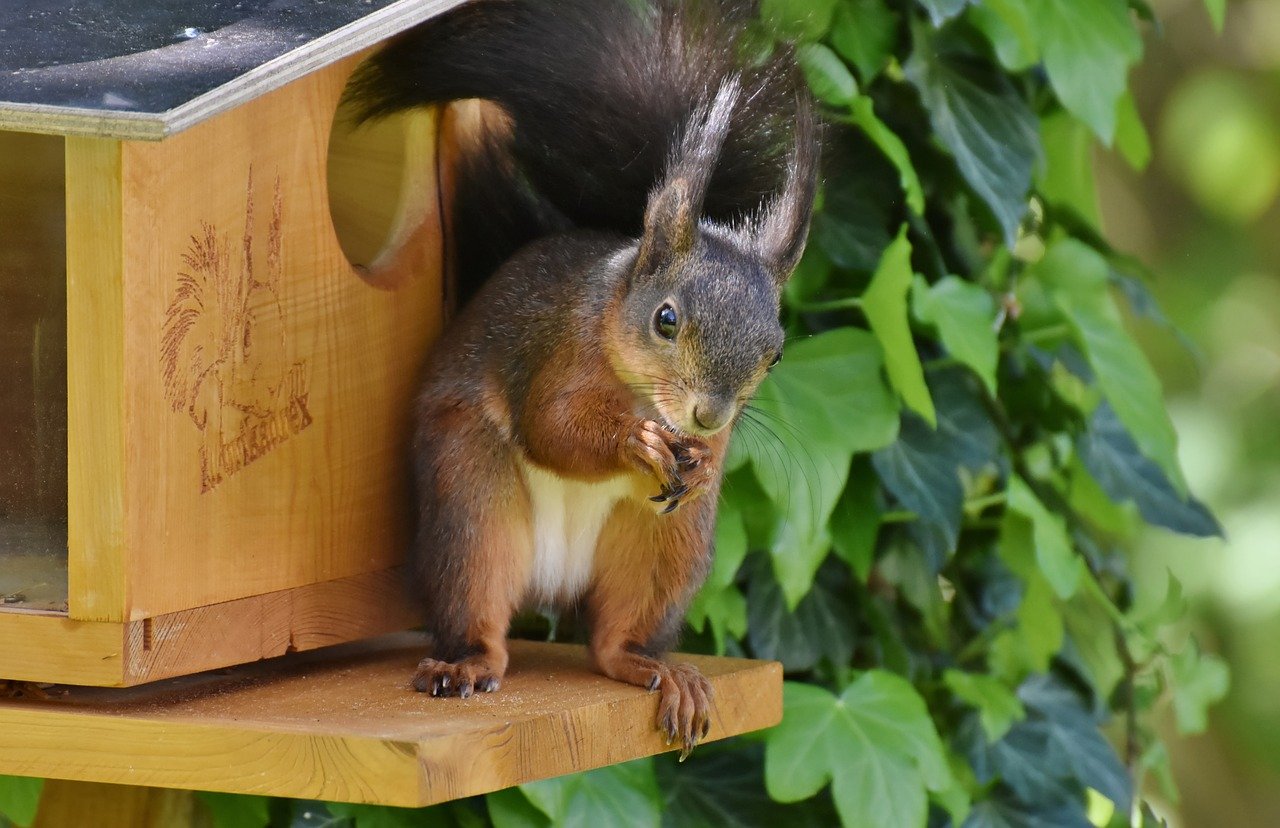
Understanding Common Pests
When it comes to protecting your home, understanding the common pests that might invade your space is the first step in safeguarding your family and your property. Pests like rodents, insects, and other critters can not only disrupt your peace of mind but can also cause significant damage if left unchecked. Let’s dive into the world of these uninvited guests, exploring their habits, behaviors, and the potential risks they pose.
Rodents, such as rats and mice, are notorious for infiltrating homes. They are agile creatures capable of squeezing through tiny openings, making them a formidable foe. These pests are often attracted to food sources, warmth, and shelter. Once inside, they can chew through wires, insulation, and even wood, leading to costly repairs. Additionally, their droppings can contaminate food and surfaces, posing serious health risks.
Insects, on the other hand, come in various forms, each with its own set of habits. For instance, ants are social insects that form colonies, and they can invade your home in search of food. Termites, often referred to as the "silent destroyers," can cause extensive damage to the structural integrity of your home without you even knowing they are there until it’s too late. Other pests like cockroaches and bed bugs can also create unsanitary conditions and disrupt your peace.
Here’s a quick overview of some common pests and their potential impact:
| Pest | Common Habits | Potential Damage |
|---|---|---|
| Rodents | Gnawing, nesting, scavenging | Wiring damage, contamination, structural issues |
| Ants | Foraging, nesting in colonies | Food contamination, structural damage (carpenter ants) |
| Termites | Feeding on wood, living in colonies | Severe structural damage, costly repairs |
| Cockroaches | Scavenging, hiding in dark areas | Health risks, contamination |
| Bed Bugs | Feeding on blood, hiding in bedding | Skin irritations, discomfort |
Understanding these pests and their behaviors can help you recognize the signs of an infestation early on. For instance, if you notice small droppings, gnaw marks, or even strange noises at night, it might be time to investigate further. By being proactive and informed, you can take the necessary steps to protect your home from these unwelcome visitors.
In conclusion, a little knowledge goes a long way when it comes to pest control. By understanding the common pests that may invade your home, you can better prepare yourself to prevent infestations and maintain a healthy living environment for you and your family. Stay tuned for the next section, where we’ll discuss the signs of infestation and how to identify them early!
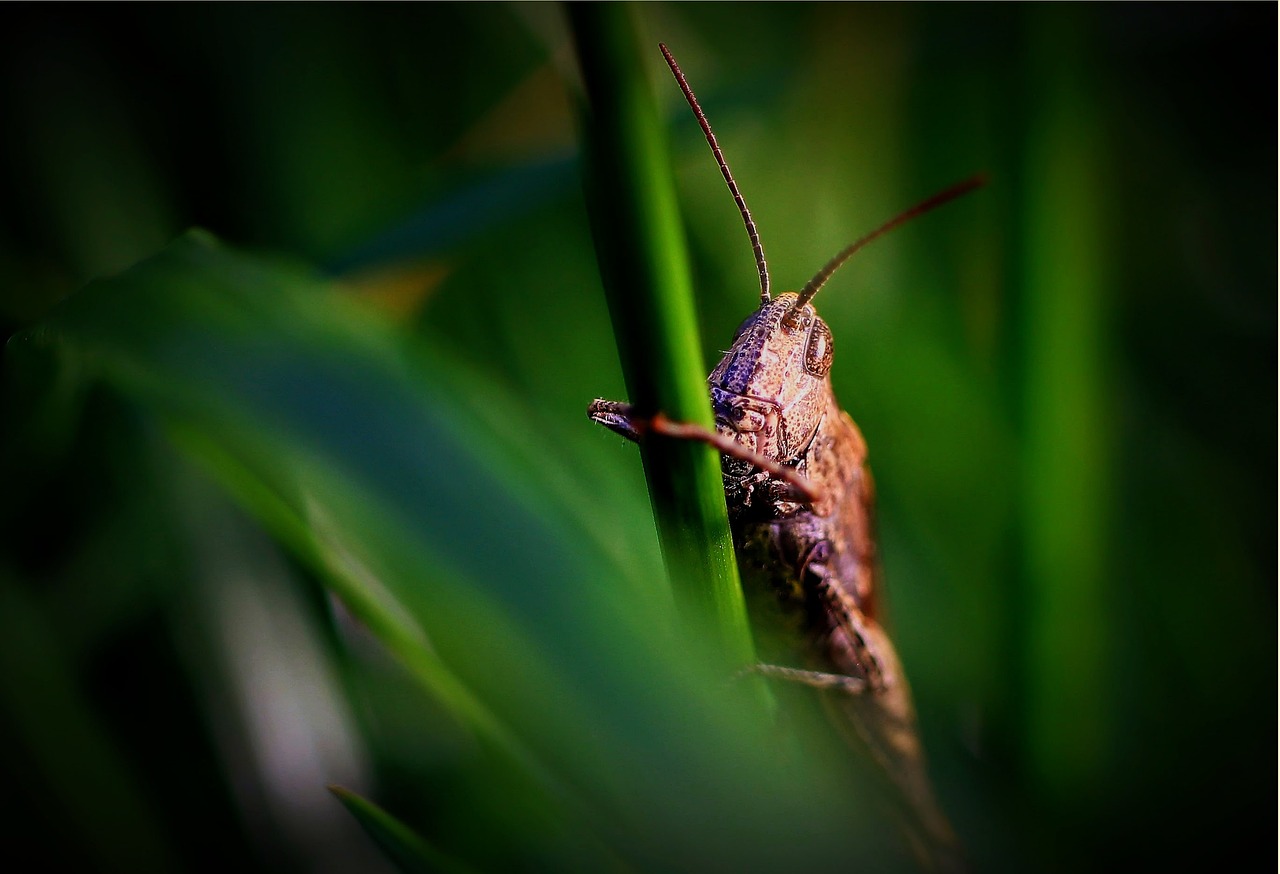
Signs of Infestation
Identifying the early warning signs of rodent and pest infestations is crucial for maintaining a healthy home environment. The sooner you recognize these signs, the quicker you can act to prevent a minor issue from spiraling into a full-blown infestation. Think of it like catching a cold; if you notice the symptoms early, you can take steps to treat it before it knocks you out for a week. So, what should you be on the lookout for?
When it comes to rodents, there are several specific signs that can indicate their presence in your home. One of the most obvious indicators is droppings. Rodent droppings are small and dark, often found in areas where they feed or nest. If you see these tiny pellets in your pantry or along baseboards, it’s time to take action.
Another common sign is gnaw marks. Rodents have a habit of chewing on various materials, including wood, plastic, and even electrical wiring. If you notice any unusual bite marks on your furniture or around your home, it could be a telltale sign of a rodent problem. Additionally, look for nesting materials such as shredded paper, fabric, or insulation, which rodents use to create cozy nests for their young.
Understanding where rodents typically enter your home can significantly help in sealing off these vulnerabilities. Common entry points include:
- Gaps around doors and windows
- Creaks in the foundation
- Holes in walls or ceilings
- Vents and ducts that are not properly sealed
By identifying these areas, you can take proactive steps to prevent rodents from making themselves at home.
It’s not just the nuisance of having rodents in your home that should concern you; they also pose serious health risks. Rodents can carry a variety of diseases, such as hantavirus, leptospirosis, and salmonella, which can be transmitted to humans through direct contact or contaminated food and surfaces. This is why recognizing the signs of a rodent infestation is not just about keeping your home clean; it’s about protecting your family’s health. Ensuring that you address any signs of infestation promptly can help maintain a safe living environment.
While rodents are a significant concern, insects can also wreak havoc in your home. The signs of insect infestations can vary widely depending on the type of pest involved. For example, if you notice small holes in your clothes or furniture, it may indicate the presence of moths or beetles. On the other hand, if you hear unusual buzzing or rustling noises, you might be dealing with a wasp or bee problem.
Visible bugs are, of course, the most obvious sign of an infestation. However, many insects leave behind subtle clues that can be easily overlooked. Look for shed skins, tiny eggs, or sticky residue in corners and crevices, which can indicate a larger issue. If you suspect an insect infestation, it's essential to act quickly, as some pests reproduce at alarming rates, turning a small problem into a massive one in no time.
In conclusion, being vigilant about the signs of infestation can save you time, money, and headaches down the line. Regularly inspect your home, especially in areas where food is stored or where moisture tends to accumulate. By staying aware and proactive, you can protect your home from unwanted pests.
Q: How can I tell if I have a rodent infestation?
A: Look for droppings, gnaw marks, and nesting materials. Additionally, listen for unusual noises, especially at night.
Q: What should I do if I find signs of pests?
A: Take immediate action by cleaning the area, sealing entry points, and considering pest control methods.
Q: Are there natural ways to deter pests?
A: Yes! Essential oils, proper food storage, and regular cleaning can help keep pests at bay.

Rodent Indicators
When it comes to identifying a rodent problem in your home, being vigilant is key. Rodents are sneaky little creatures, and they often leave behind subtle signs that can alert you to their presence before the situation escalates. One of the most common indicators of a rodent infestation is the presence of droppings. These small, dark pellets can usually be found in areas where rodents are active, such as under sinks, in cabinets, or along baseboards. If you notice these droppings, it’s a clear signal that you need to take action.
Another telltale sign is gnaw marks. Rodents have a natural instinct to gnaw on various materials to keep their teeth from growing too long. Check for bite marks on food packaging, furniture, or even electrical wires. If you see any damage, it’s a good idea to investigate further. Additionally, look for nesting materials such as shredded paper, fabric, or insulation. Rodents often create nests in hidden spots, and finding these materials can help you pinpoint their location.
Furthermore, you might hear unusual noises at night, such as scratching or scurrying sounds in your walls or ceilings. This can be particularly alarming, but it's a strong indicator that you have some uninvited guests. If you suspect rodent activity, it’s crucial to act quickly. Ignoring these signs can lead to a larger infestation, which can be costly and difficult to manage.
In summary, here are some key to watch for:
- Droppings: Small, dark pellets found in active areas.
- Gnaw marks: Damage on food packaging, furniture, or wires.
- Nesting materials: Shredded paper, fabric, or insulation.
- Noises: Scratching or scurrying sounds, especially at night.
By being aware of these indicators, you can take proactive steps to protect your home from rodents and ensure a healthier living environment for you and your family.
Q: How can I tell if I have a rodent problem?
A: Look for signs such as droppings, gnaw marks, nesting materials, and unusual noises, especially at night.
Q: What should I do if I find signs of rodents?
A: It's important to act quickly. Seal up entry points, remove food sources, and consider setting traps or contacting a pest control professional.
Q: Are rodents dangerous to my health?
A: Yes, rodents can carry diseases that pose health risks to humans, making it crucial to address any infestations promptly.

Common Entry Points
When it comes to keeping your home safe from rodents and pests, knowing their favorite entry points is crucial. Just like a thief scouting for the best way to break into a house, pests are always on the lookout for the easiest ways to gain access to your cozy abode. They can squeeze through surprisingly small openings, so vigilance is key! Here are some common entry points you should be aware of:
- Cracks and Gaps: Small cracks in your foundation or gaps around windows and doors can serve as highways for rodents. Even a gap as small as a dime can allow mice to slip in unnoticed.
- Vents and Ducts: Openings for ventilation systems can also be an easy target. Make sure these areas are properly screened to prevent unwanted guests from entering.
- Pipes and Utility Lines: Rodents are adept climbers and can use pipes and utility lines as their personal highways. Inspect these areas for openings and seal them off where necessary.
- Roof and Eaves: Don’t forget about the roof! Gaps in eaves or shingles can allow pests to enter from above, especially if they can find a tree branch or utility line to climb.
- Garage Doors: If your garage door doesn’t seal tightly, it can become a gateway for pests. Check the bottom of the door for gaps and consider installing a door sweep.
Understanding these entry points is just the first step. Once you identify potential vulnerabilities, you can take proactive measures to seal them off. This not only helps in keeping pests at bay but also contributes to better energy efficiency in your home. Think of it as fortifying your castle against invaders!
In addition to sealing these entry points, regular inspections are essential. Make it a habit to check your home periodically for new cracks or openings that may have developed over time. A little maintenance goes a long way in ensuring your home remains a pest-free sanctuary.
In summary, being aware of common entry points and taking action to seal them can significantly reduce the risk of pest infestations. Remember, an ounce of prevention is worth a pound of cure, especially when it comes to protecting your home and loved ones from the potential dangers posed by unwanted critters.
Q: How can I tell if there are pests in my home?
A: Look for droppings, gnaw marks, or nesting materials. Unusual noises at night can also be a sign of rodent activity.
Q: What should I do if I find a pest in my home?
A: Depending on the type of pest, you may want to trap it, use natural repellents, or contact a professional pest control service for assistance.
Q: Can I prevent pests from entering my home?
A: Yes! Sealing entry points, keeping food stored properly, and maintaining a clean environment are effective ways to deter pests.
Q: Are there natural ways to keep pests away?
A: Absolutely! Essential oils like peppermint and herbs such as basil can act as natural repellents.
Q: When should I call a pest control professional?
A: If you notice a significant infestation or if DIY methods aren’t effective, it’s best to seek professional help.

Health Risks of Rodents
Rodents are not just pesky intruders; they can pose serious health risks to you and your family. These furry little creatures are known carriers of various diseases that can be transmitted to humans through direct contact, bites, or even indirectly through their droppings and urine. Imagine waking up to find that your home, a sanctuary of safety, has become a potential breeding ground for illnesses! It’s crucial to understand the dangers associated with these animals to take proactive measures in protecting your health.
One of the most concerning diseases linked to rodents is Hantavirus Pulmonary Syndrome. This virus is primarily spread through contact with rodent droppings, urine, or saliva. Symptoms can range from mild flu-like signs to severe respiratory distress, making it a serious health concern. Another significant threat is Leptospirosis, a bacterial infection that can lead to liver damage, kidney failure, and even meningitis. It’s often contracted through water contaminated with rodent urine, which can be found in flooded areas or even in standing water.
Furthermore, rodents are known to carry Salmonella, which can cause food poisoning. This bacterium can be transmitted when food is contaminated by rodent droppings. You might think you're safe if you keep your kitchen clean, but just a few droppings can lead to a serious health issue. Additionally, the presence of rodents can trigger allergies and asthma in sensitive individuals due to the allergens found in their fur and droppings.
Here’s a quick overview of some of the health risks associated with rodents:
- Hantavirus Pulmonary Syndrome: Severe respiratory illness.
- Leptospirosis: Bacterial infection affecting multiple organs.
- Salmonella: Food poisoning from contaminated food.
- Allergic Reactions: Asthma and allergies due to rodent droppings and fur.
Recognizing these potential health risks emphasizes the importance of maintaining a rodent-free home. Regular inspections and prompt action at the first sign of infestation are key to safeguarding your family's health. After all, a healthy living environment is not just about comfort; it's about protecting your loved ones from unseen dangers lurking in the shadows!
Q: How can I tell if I have a rodent problem?
A: Look for signs like droppings, gnaw marks, and nests. You may also hear unusual noises at night.
Q: What should I do if I find a rodent in my home?
A: It's best to contact a pest control professional to assess the situation and provide effective solutions.
Q: Are there any natural ways to deter rodents?
A: Yes! Sealing entry points, keeping food stored properly, and using natural repellents can help keep rodents at bay.

Insect Signals
When it comes to keeping your home a sanctuary, are the alarm bells you can’t afford to ignore. These tiny invaders can wreak havoc if they find a way to settle in, so being aware of their presence is crucial. Have you ever noticed an unusual buzzing sound that seems to echo through your walls? Or perhaps you’ve spotted tiny trails of ants marching across your kitchen counter? These are just a couple of signs that insects have decided to crash your home party.
Insects often communicate their presence through a variety of signals, and recognizing these can save you from a much larger problem down the line. Common indicators include:
- Visible Bugs: The most straightforward sign is simply seeing the pests themselves. Whether it’s a cockroach scuttling across the floor or a cluster of flies buzzing around your trash, their visibility is a clear message that something needs to be done.
- Unusual Noises: Certain insects, like termites, can create a soft tapping sound as they chew through wood. If you hear these noises, it’s time to investigate further.
- Droppings: Just like rodents, many insects leave droppings that can indicate an infestation. For example, cockroach droppings are small and dark, resembling pepper flakes.
- Damage to Property: Look for signs of damage such as holes in wood, chewed wires, or frayed fabrics. These can be telltale signs of insect activity, particularly from pests like termites or carpet beetles.
Another key aspect of insect signals is the presence of nests or hives. For instance, if you find a beehive in your backyard or a wasp nest under your eaves, it’s a clear indication that you have a more significant problem on your hands. Ignoring these signs can lead to a full-blown invasion, making it essential to act swiftly.
Now, you might be wondering, "What should I do if I notice these signals?" The first step is to assess the situation. If the infestation is minor, you might be able to handle it with some DIY methods. However, if you’re facing a larger problem, it’s best to call in the professionals. They can provide targeted solutions that effectively eliminate the pests while ensuring your home remains a safe haven for your family.
In conclusion, being attuned to the signals insects send can save you from a lot of stress and potential damage to your home. Regular inspections and being vigilant about any changes in your living space can help you stay one step ahead of these pesky invaders.
Q: What are the most common signs of insect infestations?
A: Common signs include visible bugs, unusual noises, droppings, and damage to property.
Q: Should I attempt to handle an insect infestation on my own?
A: If the infestation is minor, you may use DIY methods. However, for larger problems, it's advisable to call professional pest control services.
Q: How can I prevent insects from entering my home?
A: Regular inspections, sealing entry points, and maintaining cleanliness can significantly reduce the risk of insect infestations.
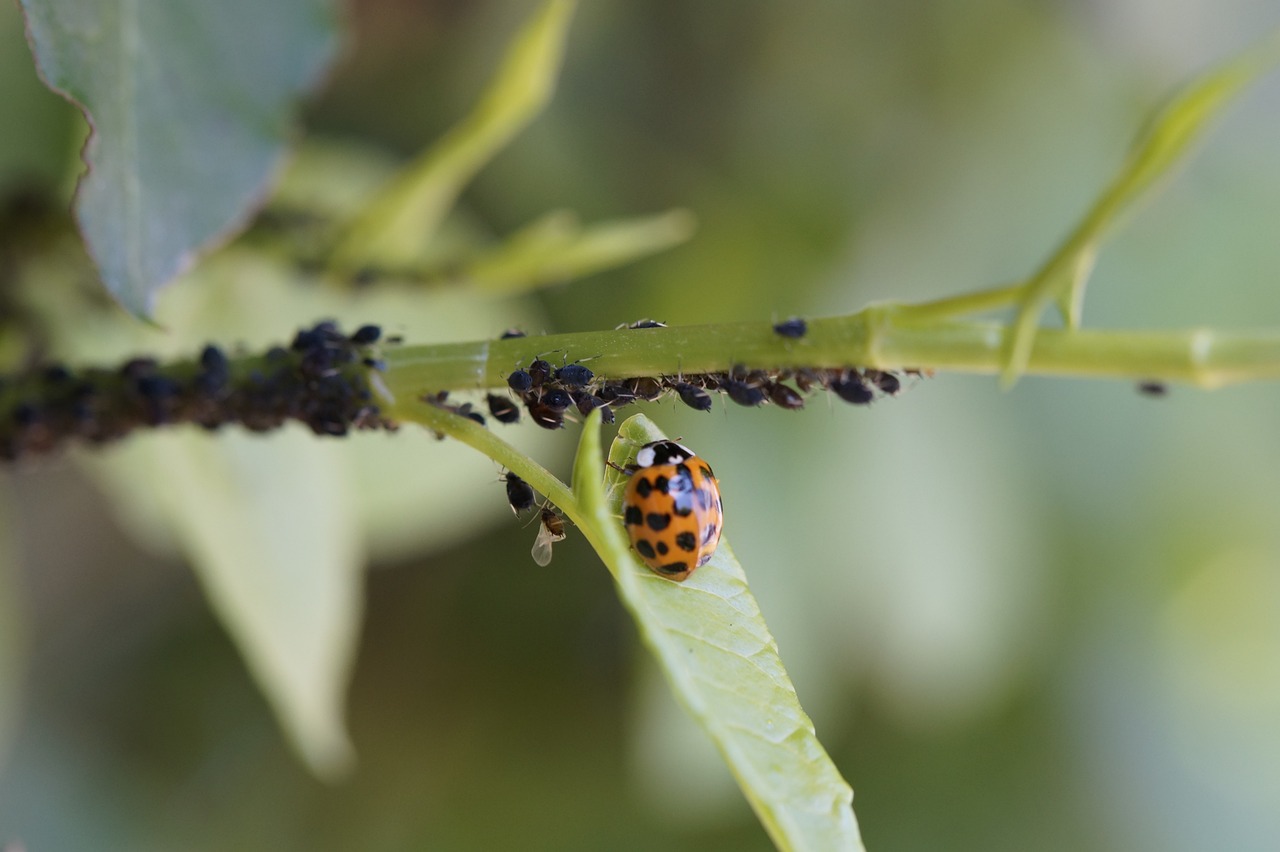
Preventative Measures
Implementing effective is your first line of defense against rodent and pest infestations. Think of your home as a fortress; if you want to keep the invaders out, you need to fortify your walls! One of the most effective strategies is to seal off entry points. Rodents and insects are crafty creatures that can squeeze through the tiniest of gaps. For instance, did you know that a mouse can fit through a hole the size of a dime? By carefully inspecting your home for cracks and gaps, especially around windows, doors, and the foundation, you can significantly reduce the risk of an infestation.
Another crucial aspect is proper food storage. Pests are constantly on the lookout for a free meal, and if your kitchen is a buffet, they’ll be sure to crash the party. Make sure to store food in airtight containers and promptly clean up any spills or crumbs. It’s also important to dispose of waste properly; using sealed trash bins can deter pests from being attracted to your home. Additionally, keeping your pantry organized and regularly checking expiration dates can help you avoid attracting unwanted guests.
Moreover, maintaining a clean environment is essential. Clutter provides perfect hiding spots for pests. Regularly decluttering your home, especially in areas like garages and attics, can make a significant difference. You might be surprised at how much of a difference a tidy space can make in preventing pest problems. Consider implementing a regular cleaning schedule that includes vacuuming, dusting, and wiping down surfaces to keep your home spotless and less inviting to pests.
For those who love gardening, it’s important to remember that your outdoor space can also be a potential entry point for pests. Keeping your garden well-maintained and avoiding overgrowth can prevent pests from finding a way into your home. Additionally, consider using natural repellents around your garden to deter pests from coming too close to your living space.
In summary, a combination of sealing entry points, proper food storage, maintaining cleanliness, and managing your outdoor space can create a formidable barrier against pests. By taking these , you can enjoy a peaceful, pest-free home where you and your family can thrive.
- What are the most common entry points for pests? Pests can enter through cracks in walls, gaps around windows and doors, holes in screens, and even through vents and chimneys.
- How can I tell if I have a pest problem? Look for signs such as droppings, gnaw marks, and unusual noises, or even the presence of live insects.
- Are there natural ways to deter pests? Yes! Essential oils like peppermint and lavender can repel pests, and maintaining cleanliness is crucial in keeping them at bay.
- When should I call a professional pest control service? If you notice a significant infestation or if your DIY efforts are not yielding results, it’s time to call in the experts.

Sealing Entry Points
When it comes to protecting your home from rodents and pests, one of the most crucial steps you can take is . Just like a fortress needs strong walls to keep invaders out, your home requires diligent attention to its vulnerabilities. Rodents and insects are crafty little creatures that can squeeze through the tiniest gaps, often without you even noticing. So, where should you focus your efforts?
Begin by examining the exterior of your home. Look for cracks in the foundation, gaps around windows and doors, and any holes in the siding. A simple visual inspection can reveal much about your home's defenses. For example, a gap as small as a quarter-inch can allow mice to enter, while larger critters like rats can fit through holes the size of a half-dollar. To help you identify common entry points, take a look at the table below:
| Entry Point Type | Common Locations | Recommended Sealant |
|---|---|---|
| Cracks | Foundation, walls | Concrete filler |
| Gaps | Doors, windows | Weather stripping |
| Holes | Pipes, vents | Steel wool or mesh |
Once you've identified these entry points, it’s time to take action. Use appropriate materials to seal them effectively. For instance, weather stripping is perfect for doors and windows, while steel wool can block off holes around pipes, as rodents struggle to chew through it. Additionally, caulking is a fantastic option for filling in cracks and crevices, creating a tight barrier that pests can’t penetrate.
But sealing entry points isn't just about using the right materials; it's also about being proactive. Regularly inspect your home, especially after harsh weather conditions, as heavy rain or wind can create new vulnerabilities. Think of it like maintaining a car; regular check-ups can prevent major issues down the road.
Moreover, don't overlook the importance of maintaining your yard. Overgrown plants and shrubs can provide cover for pests, making it easier for them to approach your home undetected. Keeping your landscaping tidy and trimmed can significantly reduce the risk of an infestation. Remember, the less inviting your home looks, the less likely pests will want to pay you a visit!
In conclusion, sealing entry points is a vital aspect of pest prevention. By being vigilant and proactive, you can create a fortress-like barrier around your home, ensuring that your living space remains a safe haven for you and your loved ones. Are you ready to get started on fortifying your home against those pesky intruders?
- How often should I check for entry points?
It's a good idea to inspect your home every few months and after any major weather changes. - Can I use regular tape to seal gaps?
No, tape is not a long-term solution. Use proper sealants like caulk or weather stripping for effective results. - What should I do if I find a large hole?
Consider consulting a professional pest control service to assess the situation and recommend appropriate measures.

Proper Food Storage
When it comes to protecting your home from pesky intruders like rodents and insects, one of the most crucial steps you can take is ensuring . Think of your kitchen as a fortress; if the gates are left wide open, invaders will find their way in. Pests are often drawn to the scent of food, and improper storage can turn your home into an all-you-can-eat buffet for them. So, how can you safeguard your food and, in turn, your home?
First off, it's essential to store food in airtight containers. Regular packaging, like cardboard boxes or plastic bags, can easily be breached by rodents and insects. Instead, opt for glass or hard plastic containers with tight-fitting lids. This not only keeps your food fresh but also makes it less accessible to unwelcome guests. For instance, grains, cereals, and pet food should be transferred to these secure containers as soon as you bring them home.
Another key aspect of food storage is keeping your pantry organized. A cluttered pantry can make it difficult to spot signs of infestation, such as droppings or gnaw marks. By regularly checking your food supplies and rotating them, you can ensure that older items are used first, reducing waste and the chance of attracting pests. Additionally, it’s wise to keep your pantry clean—crumbs and spills can be an open invitation for pests to move in. A quick wipe-down of shelves with a mild cleaner can go a long way in maintaining a pest-free environment.
Moreover, don’t forget about your garbage! Proper waste management is just as vital as food storage. Always use sealed trash bins and take out the garbage regularly. If you have compost, ensure it is kept in a sealed container as well. Insects like flies and ants are particularly attracted to decomposing organic matter, so keeping your waste contained is a must.
Lastly, if you’re ever in doubt about your food storage practices, consider implementing a food storage checklist. This can help you stay on top of what needs to be stored properly and what items may need to be discarded. Here’s a simple example:
| Food Item | Storage Method |
|---|---|
| Grains | Airtight containers |
| Canned goods | Cool, dry place |
| Perishables | Refrigerator |
| Pet food | Airtight containers |
| Leftovers | Sealed containers in the fridge |
By taking these simple steps, you can significantly reduce the likelihood of attracting pests into your home. Remember, a little bit of effort in food storage can lead to a much healthier and pest-free living environment for you and your family.
- What types of containers are best for food storage? Glass or hard plastic containers with airtight lids are ideal for keeping food fresh and pest-free.
- How can I tell if my food has been contaminated by pests? Look for signs like droppings, gnaw marks, and unusual smells. If you suspect contamination, it's best to discard the affected items.
- Is it necessary to keep my pantry organized? Yes! An organized pantry helps you spot any signs of infestation quickly and keeps your food safe.
- How often should I clean my pantry? Regularly check and clean your pantry at least once a month to prevent pest attraction.
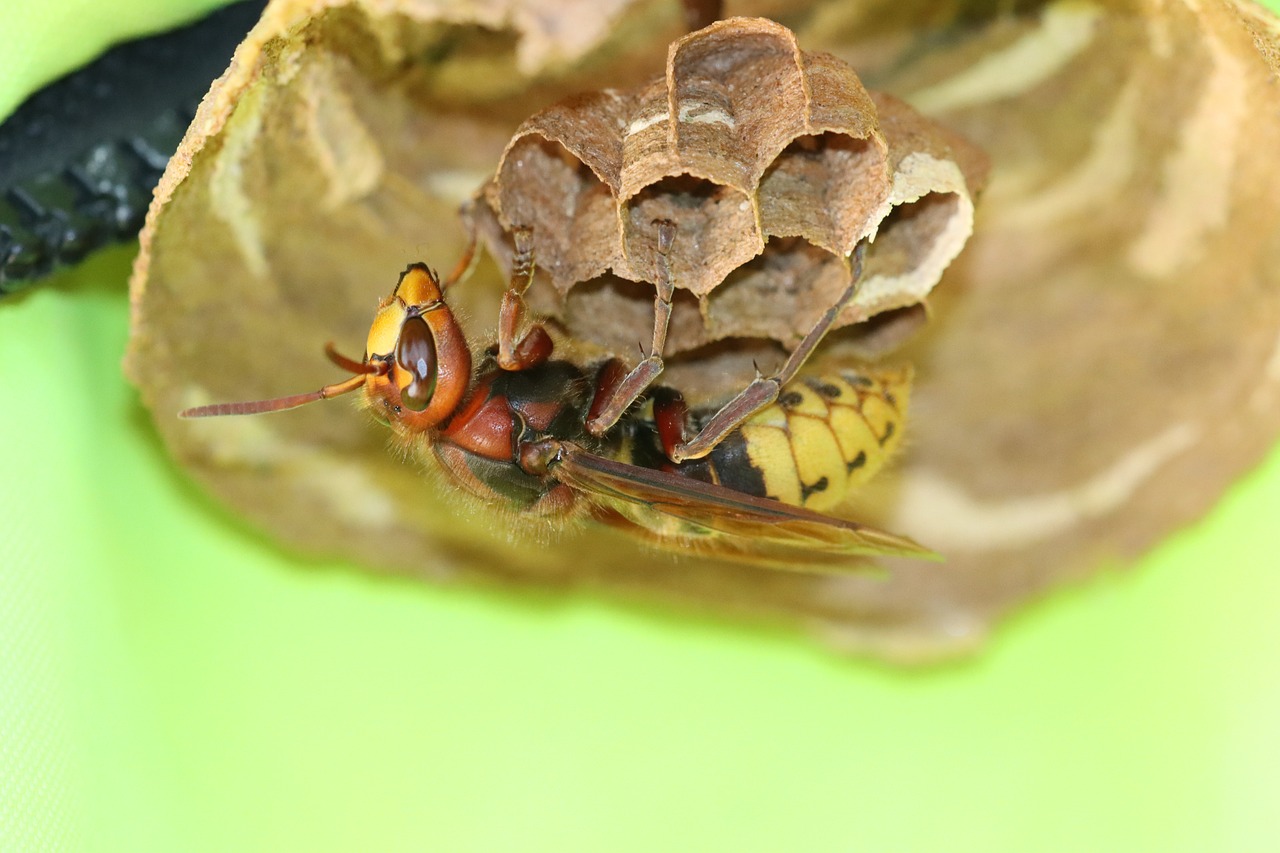
Natural Pest Control Solutions
When it comes to keeping your home pest-free, there’s a growing trend towards using . Not only are these options safer for your family and pets, but they also tend to be more environmentally friendly. Imagine a world where you can keep your home safe from pesky invaders without the harsh chemicals that can linger in your living space. Sounds great, right? Let’s dive into some effective natural methods that can help you reclaim your home from unwanted guests.
One of the most popular methods involves the use of essential oils and herbs. Many of these natural substances have properties that repel pests effectively. For instance, oils like peppermint, lavender, and tea tree are not just pleasant to smell; they are also known for their pest-repelling abilities. You can create your own natural pest deterrent by mixing a few drops of these oils with water in a spray bottle. A quick spritz around entry points and infested areas can send those little critters packing!
Here’s a quick rundown of some effective essential oils and their pest-repelling properties:
| Essential Oil | Pests Repelled |
|---|---|
| Peppermint | Ants, spiders, mice |
| Lavender | Moths, mosquitoes, fleas |
| Tea Tree | Ants, cockroaches, spiders |
| Citrus | Fruit flies, spiders, ants |
Another natural solution is the use of traps and barriers. Think of these as your first line of defense against pests. For rodents, setting up traps made from safe materials can help catch them without the use of harmful poisons. You can easily create simple traps using common household items. For example, a bucket filled with a few inches of water can serve as a rodent trap when placed strategically. Just make sure to add a ramp leading up to the edge of the bucket, and you’ll have a DIY solution that’s both effective and humane.
In addition to traps, consider using physical barriers. Sealing cracks and gaps around your home is crucial in preventing pests from entering. Use materials like caulk or steel wool to close off potential entry points. Remember, even the tiniest of holes can be an open invitation for rodents and insects. By being proactive, you can significantly decrease the likelihood of an infestation.
Moreover, keeping your home clean and clutter-free is essential. Pests thrive in environments where food and shelter are readily available. Ensure that food is stored in airtight containers and that your trash is secured. Regularly cleaning up crumbs and spills can make your home less attractive to pests. It’s a simple yet effective strategy that can save you from bigger problems down the road.
Lastly, if you’re looking for a more holistic approach, consider incorporating natural predators into your pest control strategy. For example, introducing ladybugs into your garden can help control aphid populations, while birds can keep insect numbers in check. By fostering a balanced ecosystem in your yard, you can naturally reduce pest populations without the need for chemical interventions.
In conclusion, natural pest control solutions not only protect your home but also contribute to a healthier living environment. By utilizing essential oils, traps, barriers, and promoting cleanliness, you can effectively manage pest problems without the worry of harmful chemicals. Remember, a proactive approach is key to maintaining a pest-free home!
- Are natural pest control methods effective? Yes, many natural methods can be very effective when used correctly and consistently.
- Can I use essential oils around pets? While many essential oils are safe, it's essential to research specific oils and consult with a veterinarian to ensure they won't harm your pets.
- How often should I apply natural pest repellents? It depends on the product and the pest issue, but generally, reapplication every few days or after rain is advisable.
- What are some signs of pest infestation? Look for droppings, gnaw marks, or unusual noises as indicators of pests in your home.

Essential Oils and Herbs
When it comes to keeping pests at bay, can be your best friends. These natural remedies not only smell delightful but also possess properties that repel unwanted visitors. Imagine walking through your home, greeted by the refreshing scent of peppermint or eucalyptus, while simultaneously knowing that these aromas are working hard to keep rodents and insects away. It’s like having a personal bodyguard for your living space!
Many essential oils have been studied for their effectiveness against pests. For instance, peppermint oil is a powerful deterrent against mice and ants. Just a few drops in areas where you suspect rodent activity can make a significant difference. Similarly, lavender oil is known to repel moths and mosquitoes, making it an excellent choice for keeping your home both fragrant and pest-free.
But how do you use these oils effectively? Here are some popular methods:
- Diffusion: Using a diffuser, you can disperse essential oils throughout your home, creating a pleasant atmosphere while deterring pests.
- Sprays: Mix essential oils with water in a spray bottle and apply it around entry points, windows, and doors. A blend of water and a few drops of tea tree oil can work wonders.
- Soaked Cotton Balls: Soak cotton balls in essential oils and place them in areas where you suspect pest activity. This method is particularly effective for rodents.
In addition to essential oils, certain herbs can also help keep pests away. For example, rosemary and basil are not only great for cooking but also serve as natural repellents. You can grow these herbs in your garden or even indoors, providing dual benefits of culinary uses and pest control.
Here’s a quick table summarizing some effective essential oils and their pest-repelling properties:
| Essential Oil | Pests Repelled |
|---|---|
| Peppermint Oil | Mice, Ants |
| Lavender Oil | Moths, Mosquitoes |
| Tea Tree Oil | Spiders, Ants |
| Eucalyptus Oil | Mice, Flies |
| Rosemary | Flies, Mosquitoes |
Incorporating these natural solutions into your pest management routine not only promotes a healthier living environment but also aligns with a more sustainable lifestyle. Unlike chemical pesticides, essential oils and herbs are less harmful to the environment and your family, making them a smart choice for anyone looking to protect their home.
Q: Are essential oils safe for pets?
A: While many essential oils are safe, some can be harmful to pets. Always research and consult with a veterinarian before using essential oils in a home with pets.
Q: How often should I reapply essential oils for pest control?
A: It’s recommended to reapply every few days, especially after cleaning or if the scent fades. Keeping a consistent application can enhance effectiveness.
Q: Can I mix different essential oils?
A: Absolutely! Many essential oils work synergistically, enhancing each other's pest-repelling properties. Just ensure that the oils you mix are safe and compatible.
By integrating essential oils and herbs into your pest control strategy, you can create a more inviting and pest-free home. So why not give it a try? Your nose—and your family—will thank you!

Traps and Barriers
When it comes to keeping your home free from unwanted pests, serve as two of the most effective tools in your arsenal. Imagine your home as a fortress; just as a castle has walls and moats to keep out intruders, your home can benefit from similar protective measures. Traps can capture pests that manage to slip through the cracks, while barriers can prevent them from entering in the first place. Together, they create a formidable defense against infestations.
There are different types of traps available, each designed for specific pests. For instance, if you’re dealing with rodents, snap traps and glue traps are popular choices. Snap traps are designed to quickly kill the rodent upon contact, while glue traps immobilize them until you can dispose of them. On the other hand, if insects are your main concern, you might consider using sticky traps or bait stations. Sticky traps catch a variety of crawling insects, while bait stations lure pests in with food laced with poison, effectively reducing their numbers.
One of the key advantages of using traps is that they provide a non-toxic solution to pest control. Unlike chemical sprays that can leave harmful residues, traps can be placed strategically around your home without posing a significant risk to your family or pets. However, it’s important to check traps regularly to ensure they are functioning effectively. A trap that is full or has been inactive for too long can become a breeding ground for bacteria, negating its purpose.
In addition to traps, physical barriers are crucial for pest prevention. Sealing off entry points is like putting up a strong gate to your castle. Common entry points include gaps around windows, doors, and even the foundation of your home. To effectively create barriers, consider using materials like caulk for small cracks, or steel wool for larger openings. Not only does this stop pests from entering, but it also enhances your home’s energy efficiency by keeping drafts at bay.
To illustrate the effectiveness of traps and barriers, here’s a simple comparison table:
| Type | Description | Best For |
|---|---|---|
| Snap Traps | Quickly kills rodents upon contact. | Rats, mice |
| Glue Traps | Immobilizes pests until disposal. | Rodents, insects |
| Sticky Traps | Catches crawling insects. | Ants, cockroaches |
| Bait Stations | Lures pests with food laced with poison. | Ants, rodents |
In summary, the combination of traps and barriers can significantly enhance your pest control strategy. By being proactive and addressing potential entry points while also setting traps, you can maintain a pest-free sanctuary for your family. Remember, maintaining vigilance and regularly checking your traps and barriers can make all the difference in keeping your home safe and sound.
- How often should I check my traps? It's advisable to check traps at least once a week to ensure they are effective and to dispose of any captured pests promptly.
- Can I use traps and barriers together? Absolutely! In fact, using both methods in tandem provides a more comprehensive approach to pest control.
- Are traps safe to use around pets? While many traps are safe, it's essential to place them in areas inaccessible to pets to avoid accidental harm.
- What should I do if I catch a pest? If you catch a pest, dispose of it immediately and clean the area to eliminate any lingering odors that might attract more pests.

Professional Pest Control Services
When it comes to dealing with pest infestations, sometimes the situation can spiral out of control, leaving you feeling overwhelmed and unsure of what to do next. This is where come into play. These experts are equipped with the knowledge, tools, and experience necessary to tackle even the most stubborn pest problems. But how do you know when it's time to call in the pros? If you've noticed a significant increase in pest activity, or if your DIY efforts have fallen short, it might be time to seek professional help.
One of the first steps in choosing a pest control service is to understand the different types of treatments they offer. Most companies will provide a range of options, from chemical treatments to more natural solutions. It's essential to select a service that aligns with your personal preferences and the specific needs of your home. For instance, if you have children or pets, you may want to opt for eco-friendly treatments that are less harmful to your loved ones.
Additionally, it's crucial to ensure that the pest control service you choose is reputable. Look for companies that have positive reviews and a solid track record in your area. You can ask friends or family for recommendations, or check online platforms for ratings and feedback. A good service will be transparent about their methods and will take the time to explain their approach to you. They should also be willing to answer any questions you have about their techniques and the safety of their products.
Once you've selected a pest control service, you'll typically go through an initial consultation where they assess your home for signs of infestation. During this visit, they may ask questions about the types of pests you've encountered and any previous pest control measures you've taken. This information helps them develop a tailored treatment plan that addresses your specific situation. It's important to communicate openly during this process, as it can significantly impact the effectiveness of the treatment.
After the treatment plan is in place, the pest control team will carry out the necessary treatments, which may include:
- Inspection of the property
- Application of pesticides or natural repellents
- Implementation of preventative measures
Following the treatment, many companies offer follow-up services to ensure that the pests have been effectively eliminated and to prevent future infestations. This ongoing support can be invaluable, as it provides peace of mind and helps you maintain a pest-free environment in your home.
In summary, while dealing with pests can be a daunting task, professional pest control services can provide the expertise and support you need to reclaim your space. Whether you're facing a minor annoyance or a serious infestation, these professionals are equipped to help you find a solution that works for you. Remember, the key to a pest-free home is not just treatment, but also prevention, so consider regular check-ups with your pest control service to keep your home safe and healthy.
Q: How do I know if I need professional pest control?
A: If you notice an increase in pest activity, or if your DIY methods aren't working, it may be time to call in the professionals.
Q: Are pest control treatments safe for my family and pets?
A: Many pest control services offer eco-friendly options that are safe for families and pets. Always ask about the products used and their safety measures.
Q: How often should I schedule pest control services?
A: It depends on your specific situation, but many homeowners benefit from regular inspections and treatments at least once a year.
Q: What should I do to prepare for a pest control treatment?
A: Your pest control service will provide specific instructions, but generally, you'll want to clear the area of furniture and personal items, as well as secure any pets.
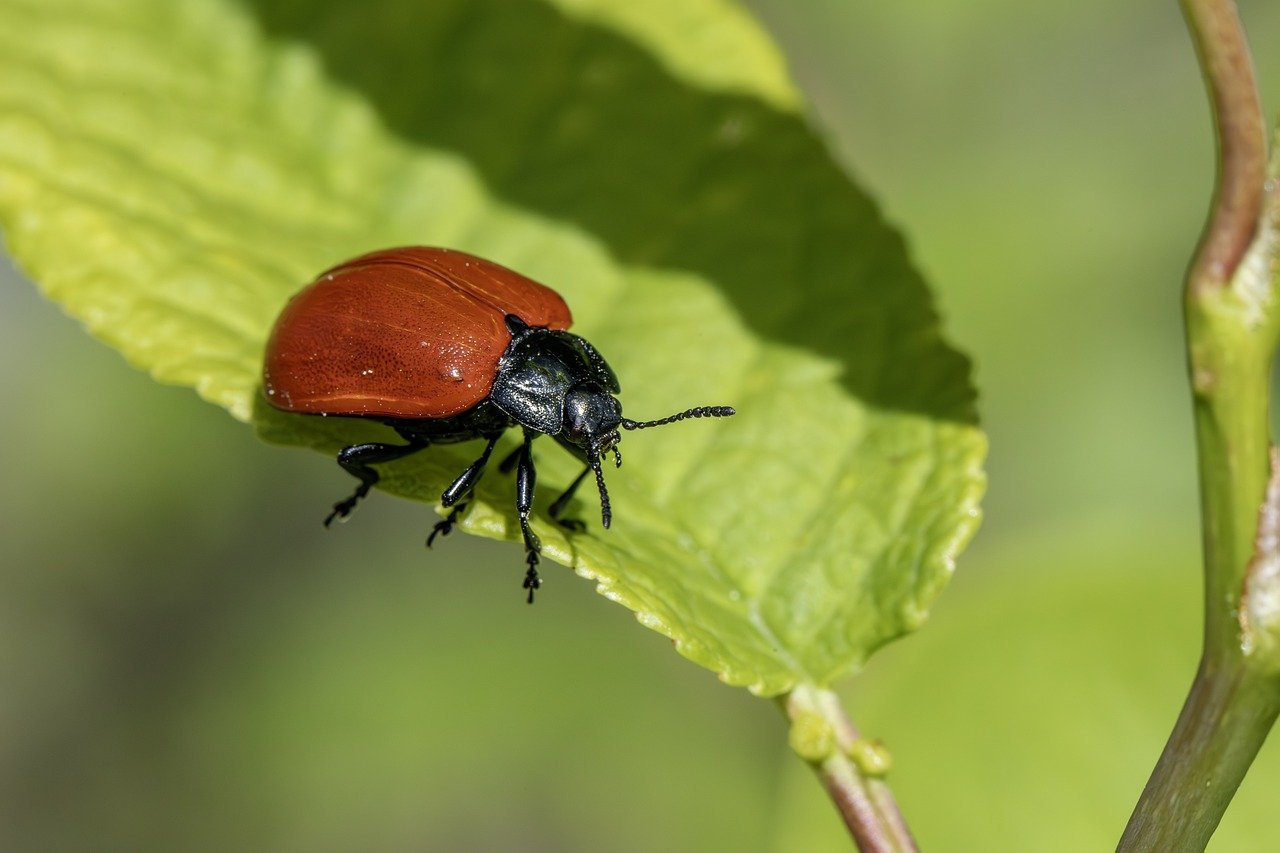
Choosing the Right Service
When it comes to dealing with pesky pests, selecting the right pest control service can feel like finding a needle in a haystack. With so many options available, how do you choose the one that will effectively tackle your issue? Start by considering a few key factors that can guide your decision. First and foremost, look for a company with a solid reputation. You can check online reviews or ask friends and family for recommendations. A reliable pest control service should have a track record of satisfied customers who can vouch for their effectiveness.
Next, ensure that the service you choose is licensed and insured. This not only shows that they are qualified to handle pest control but also protects you in case of any mishaps during treatment. It’s also a good idea to inquire about the types of treatments they offer. Some companies might specialize in eco-friendly solutions, while others may rely on traditional chemical treatments. Depending on your preferences and any health concerns, this can be a crucial factor in your decision-making process.
Another important aspect is the company’s approach to pest control. Do they conduct a thorough inspection of your property before recommending a treatment plan? A reputable service will take the time to assess the extent of the infestation and identify the specific pests involved. This personalized approach ensures that the treatment plan is tailored to your unique situation, increasing the chances of a successful outcome.
Moreover, don’t hesitate to ask about their follow-up services. A good pest control company will not only treat your current infestation but will also provide guidance on how to prevent future issues. They should offer follow-up visits or check-ins to ensure that the problem is truly resolved. After all, the last thing you want is to deal with another infestation shortly after treatment.
Lastly, consider the cost of the services. While you don’t want to skimp on quality, it’s essential to find a service that fits your budget. Many companies offer free estimates, so take advantage of this to compare prices and services. Remember, the cheapest option isn’t always the best; instead, look for a balance between quality and affordability.
In summary, choosing the right pest control service involves a combination of reputation, licensing, treatment options, personalized approaches, follow-up services, and cost. By keeping these factors in mind, you can confidently select a provider that meets your needs and helps you reclaim your home from unwelcome intruders.
- How do I know if I need professional pest control? If you notice signs of infestation, such as droppings, nests, or damage to your property, it's time to call in the experts.
- Are pest control treatments safe for my family and pets? Many pest control services offer eco-friendly options that prioritize safety. Always ask about the chemicals used.
- How long does pest control treatment take? The duration varies depending on the type of pest and the extent of the infestation, but most treatments can be completed in a few hours.
- Will I need multiple treatments? It often depends on the severity of the infestation. Many services recommend follow-up treatments to ensure complete eradication.

Understanding Treatment Plans
When faced with a pest infestation, understanding the various treatment plans available can be a game changer for homeowners. Each pest problem is unique, and so are the solutions tailored to tackle them. Professional pest control services typically offer a range of treatment plans that not only address the immediate issue but also help in preventing future infestations. It’s essential to recognize that not all pests require the same approach; hence, a personalized plan can make all the difference.
Most treatment plans start with a thorough inspection of your property. This initial step is crucial as it helps professionals identify the type of pests present, the extent of the infestation, and any potential entry points that need to be sealed. After this assessment, pest control experts will discuss the most effective methods for eradication. These methods can include chemical treatments, baiting systems, and even natural solutions, depending on your preferences and the severity of the problem.
Here’s a breakdown of some common treatment options you might encounter:
| Treatment Type | Description | Pros | Cons |
|---|---|---|---|
| Chemical Treatments | Involves the use of pesticides to eliminate pests. | Fast-acting, highly effective. | Potential health risks, environmental concerns. |
| Baiting Systems | Utilizes bait stations to attract and poison pests. | Targeted approach, reduces chemical exposure. | May take longer to see results. |
| Natural Solutions | Employs eco-friendly products and methods. | Safe for pets and children, environmentally friendly. | May be less effective for severe infestations. |
Moreover, understanding the treatment plan also involves knowing the follow-up procedures. After the initial treatment, pest control companies often recommend a maintenance schedule to monitor and prevent future infestations. This could involve regular inspections and treatments at intervals that suit your living environment. By adhering to these follow-up procedures, you not only ensure the effectiveness of the initial treatment but also promote a long-term pest-free home.
It’s also vital to communicate with your pest control provider about any concerns or specific needs you may have. For instance, if you have pets or small children, you might prefer natural treatments over chemical ones. A reputable service will work with you to customize a plan that aligns with your lifestyle while effectively managing pest issues.
In conclusion, understanding treatment plans is about more than just pest removal; it’s about creating a safe and healthy environment for you and your family. By being informed and engaged in the process, you can ensure that your home remains a sanctuary, free from unwanted guests.
- How often should I have my home treated for pests? It depends on the type of pests and your location, but typically, an annual inspection is recommended.
- Are natural pest control methods effective? Yes, natural methods can be effective, especially for minor infestations, but they may take longer than chemical treatments.
- What should I do if I see pests after treatment? Contact your pest control service immediately; they may need to adjust your treatment plan.
- Can I treat pests myself? While DIY methods can help with minor issues, severe infestations are best handled by professionals.
Frequently Asked Questions
- What are the most common signs of a rodent infestation?
Rodents are sneaky little critters, but they leave behind clues. Look for droppings, gnaw marks on furniture or walls, and nesting materials like shredded paper or fabric. If you hear scratching sounds at night, it might be time to investigate further!
- How can I prevent pests from entering my home?
Prevention is key! Start by sealing any gaps or cracks in your walls, windows, and doors. Proper food storage is also crucial—keep food in airtight containers and regularly dispose of waste. Think of your home as a fortress; every little gap is a potential entry point for unwanted guests!
- Are there natural remedies for pest control?
Absolutely! Essential oils like peppermint and lavender are known to repel pests naturally. You can mix them with water and spray around your home or use them in a diffuser. It’s like giving your home a lovely scent while keeping pests at bay!
- When should I call a professional pest control service?
If your pest problem is beyond your control or if you notice a significant infestation, it’s time to call in the pros. They have the tools and expertise to tackle the issue effectively, ensuring your home is pest-free and safe.
- What health risks do rodents pose to humans?
Rodents can carry diseases such as hantavirus and leptospirosis, which can be harmful to humans. They also bring allergens into your home through their droppings and urine. Keeping your home rodent-free is essential for your family's health!
- How do I choose the right pest control service?
Look for a service with good reviews and certifications. Ask about their treatment methods and ensure they are safe for your family and pets. A reputable company will be transparent about their processes and offer a guarantee on their work!
- What are the best practices for food storage to deter pests?
Store food in sealed containers and keep your pantry organized. Regularly check for expired items and clean up spills immediately. Think of it as creating a buffet for your family, not for pests!



